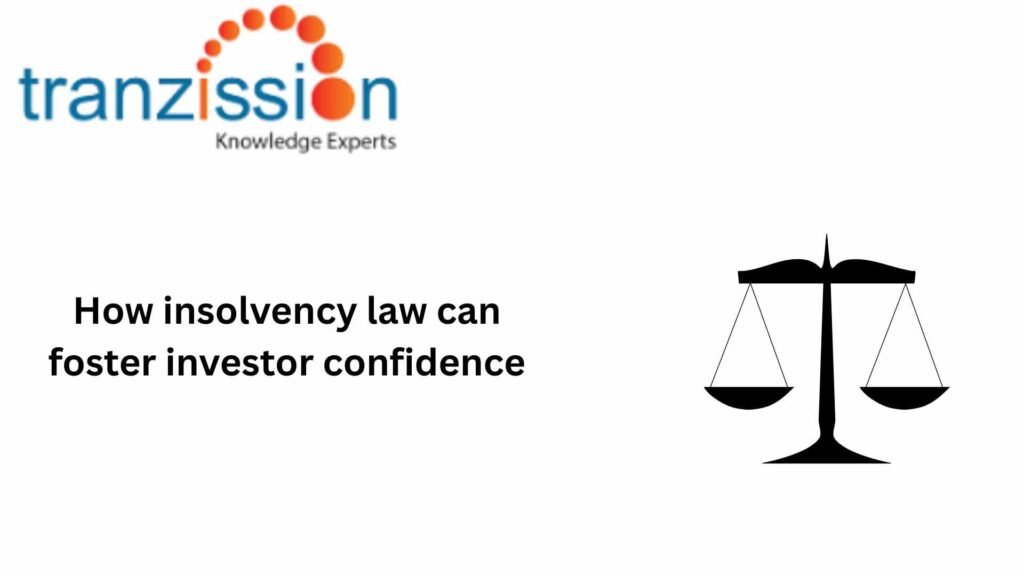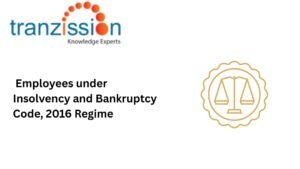
How insolvency law can foster investor confidence

Table of Contents
Investor Expectations:
Legal frameworks provide a structured process for debt recovery, business reorganisation, and asset distribution and significantly influence investment decisions during insolvency. These frameworks, including the Insolvency and Bankruptcy Code, 2016 (IBC), offer a predictable and enforceable system that enhances insolvency law can foster investor confidence, potentially encouraging investment in distressed companies. They assure exit mechanisms, protect creditor rights, and provide time-bound dispute resolution.
Importance of the Rule of Law:
By adhering to established legal frameworks, insolvency proceedings protect the rights of creditors, allow for orderly restructuring or liquidation, and foster economic stability. Having transparent enforcement processes and fair prioritization of claims and trust in institutional mechanisms, such as the National Company Law Tribunal (NCLT) and the Insolvency and Bankruptcy Board of India (IBBI).
Key Features of the insolvency law can foster investor confidence
According to the Preamble of the IBC, the features of the insolvency framework that enhance insolvency law can foster investor confidence are:
Time-Bound Resolution Process:
The IBC mandates a strict timeline for insolvency resolution, 330 days, preventing prolonged litigation and value erosion. This builds confidence by ensuring a predictable and efficient resolution process.
Creditor-in-Control Model:
It prioritises creditor rights, including the ability to initiate insolvency proceedings and participate in decision-making through the Committee of Creditors (CoC). The commercial decisions made by financial creditors, encourage insolvency law can foster investor confidence trust in market-driven outcomes, as creditors know their interests are protected under the IBC.
Improved Recovery Rates:
In comparison with the previous insolvency framework, the IBC has significantly enhanced the predictability of returns on distressed assets.
Case Studies Demonstrating Positive Impact
The IBC has demonstrated positive outcomes in resolving distressed companies and the improvement of the financial health of the Indian economy. Several cases highlight the benefits, including improved creditor recovery rates, expedited resolution processes, and business revival. For example, the Tata Steel acquisition of Bhushan Steel demonstrates the effectiveness of the IBC in enabling the restructuring of a large, debt-laden company. The Essar Steel case showcased how the IBC facilitates a streamlined insolvency process, leading to ArcelorMittal’s successful acquisition and significant debt recovery for creditors. Additionally, the IBC has led to the growth of stressed asset investment funds and a rise in mergers and acquisitions activity involving distressed companies.
Challenges That Still Hinder Confidence
Delays in Resolution:
A well-defined insolvency framework under the IBC provides a structured approach to resolving financial difficulties, reducing uncertainty and potential delays. Despite statutory timelines, there are judicial backlogs due to the complexity of cases, which eventually affects the insolvency law can foster investor confidence perception.
Inconsistency in Interpretation:
Ambiguous interpretations of the IBC by the tribunals are a recurring issue, leading to varying rulings and challenges for stakeholders, particularly for insolvency law can foster investor confidence. These ambiguities often arise from complex provisions, differing judicial perspectives, and the need to balance competing interests within the insolvency process. Hence, there is a need for jurisprudential consistency to avoid risk aversion.
Limited Cross-Border Clarity:
The absence of a unified cross-border insolvency framework can be a deterrent for foreign institutional investors. On the other hand, a strong insolvency framework can attract foreign investment by reassuring investors that their rights will be protected in case of insolvency.
Policy Recommendations for Strengthening Investor Trust
To strengthen investor trust in the insolvency process, there are certain recommendations for the stakeholders, such as:
- To enhance the efficiency of the NCLT and the IBBI, it is crucial to establish training for insolvency professionals and the judiciary.
- The IBBI should ensure cross-border insolvency provisions and clarify grey areas around priority of claims and interim finance.
- The IBBI needs to establish mandatory public disclosures during CIRP and real-time tracking of resolution progress for stakeholders.
Conclusion
Insolvency can foster investor confidence by providing a structured and transparent framework for resolving financial distress, ensuring creditor rights, and promoting economic stability. This confidence is crucial for attracting both domestic and foreign investment. A robust insolvency framework can improve recovery rates, reduce the risk of prolonged litigation, and create a more predictable environment for businesses. Hence, legal amendments to the IBC, updated circulars, and the introduction of new guidelines ensure the consistency of the insolvency framework, instilling confidence in potential investors.
Read more :





